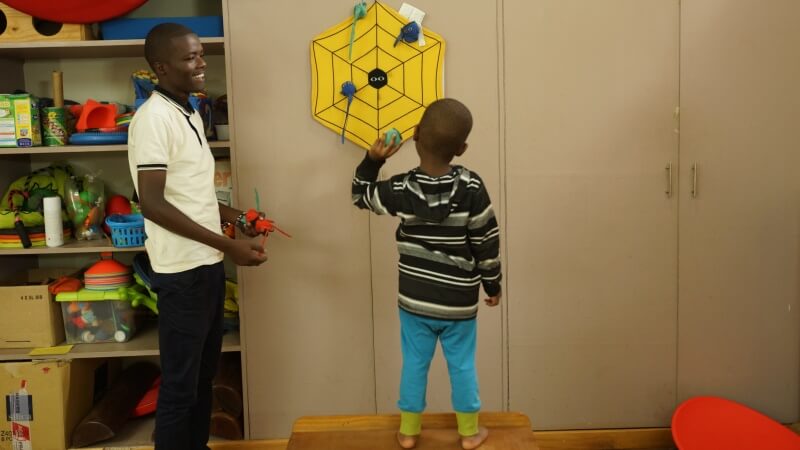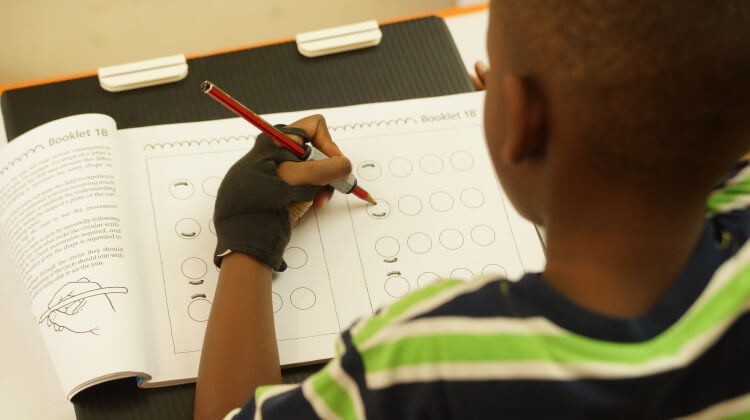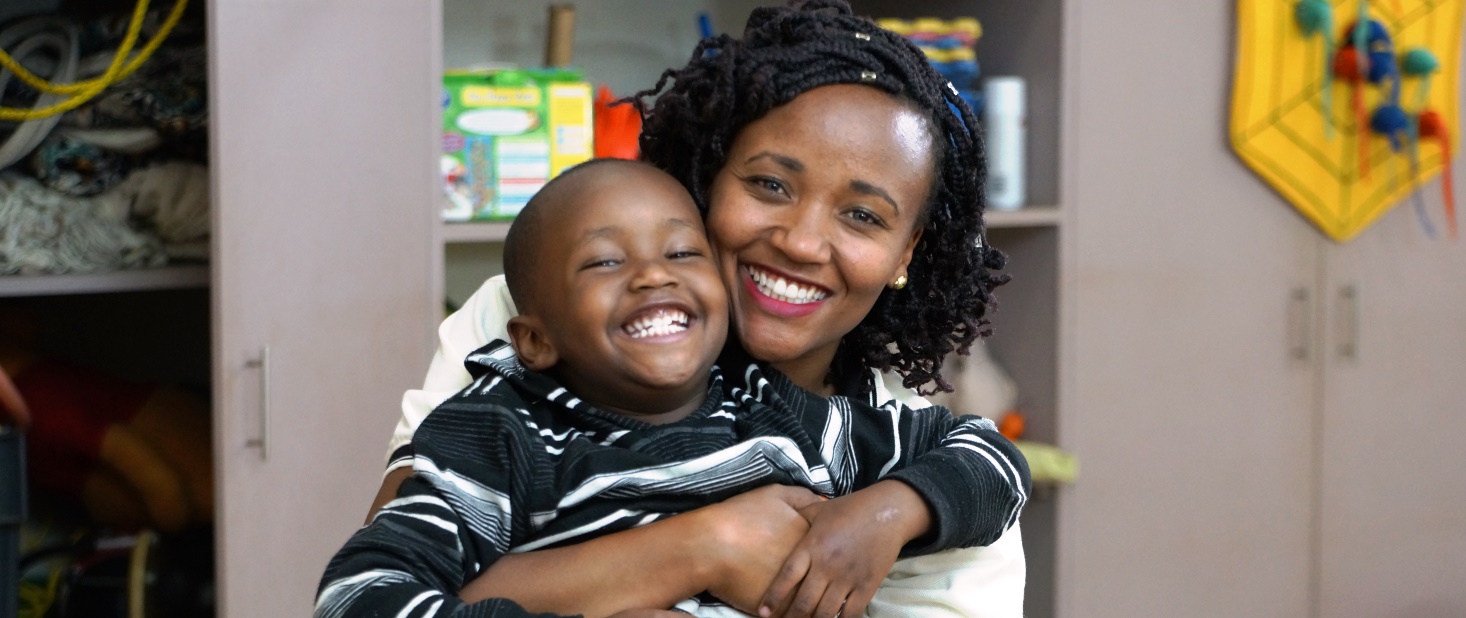
A pediatric occupational therapist works with dyspraxic students in different environment; at home, in-clinic and in-school. During in-school therapy, occupational therapists work on strategies that enable students to effectively function In-Class and out-of-class activities. The occupational therapist will observe how the student goes through everyday functions at school and home to help the student develop the skills lacking.
What is Dyspraxia?
Dyspraxia was gotten from the word Praxis which means “the ability to perform intentional movements or simple gestures.” Hence Dyspraxia is the difficulty imagining, planning, and executing movement to achieve a desired output. Think of catching a ball; it definitely appears easy; however, it involves several cognitive, perceptual, and motor processes. A Dyspraxic student may have challenges with the processing of movement required to catch a ball (ideation/Imagining) or forming the motor plan to place themselves in an appropriate position to catch the ball (planning), or they might have difficulty carrying out a sequence of movements to see the ball (execution).
With Dyspraxia, the problem is in the impairment of conceptualizing, planning, and or/ execution which affects or interferes with motor coordination. So, if we go back to the catching exercise, the dyspraxic student will miss the ball or hit their face/body. They might also fall while trying to catch the ball due to the lack of coordination in their hands and feet movement.
According to published reports, 5.3 percent of the global student population suffers from coordination problems and does not achieve their academic potential (Maeland, 1992; Gubbay, 1975; Henderson and Hall, 1982). It can, therefore, be assumed that at least 1 child in a class of 30 will have motor coordination difficulties, but the figure may rise to as many as 3.
How can one identify a child with Dyspraxia?

A diagnosis of Dyspraxia can be made by an occupational therapist or a child developmental pediatrician.
At different stages of a student’s school life, Dyspraxia can present differently. The stages we can focus on are:
- In Kindergarten. ( 3 – 4 years)
- In Grades 1 and 2. (7 – 9 years)
- In Grades 4, 5, and above. (9 – 14 years)
Identifying Dyspraxia in Kindergarten. (3–4 years)
When a student is in kindergarten, they can usually play well in the playground and maneuver their way through various play items in the fields. They can dance with a gentle rhythm and attempt to catch big balls. They can put on T-shirts, trousers, and underwear independently. However, this is not so for a Dyspraxic student.
Here below is a list of probable signs of Dyspraxia in a kindergarten student:
- They might appear clumsy; they will bump into objects and people.
- Constant falls: This might be due to balance difficulties.
- Lack of rhythm in movement (e.g., in Catching and kicking)
- A problem in constructive play that requires manipulation, like Building Blocks.
- Untidy appearance due to poor body image and an inability to coordinate dressing and undressing.
- Using a knife and a fork, the student prefers eating with his hands.
Identifying Dyspraxia in Grade 1 and 2 (7–9 years)
In grades 1 and 2, a student should display great levels of coordination and be able to do most of the activities of daily living such as dressing independently. As much as handwriting will vary for different students, good arrangement and consistent spacing of letters and words will remain constant.
A grade 1 and Grade 2 Dyspraxic student will present with the following symptoms:
- Difficulty dressing due to challenge with buttoning and tying the shoe laces.
- Constant falls. This might be due to the balance difficulties.
- Avoiding playing in the playground.
- Drawing and construction skills could be improved.
- Fine motor challenges, especially during Pen and Paper tasks.
- Confusion between left and right.
- Poor spacing of words on a page.
Identifying Dyspraxia in Grade 4, 5 and above (9-14 years)
When a student is in Grade 4 and above, they are expected to have the coping skills to organize themselves with little supervision. In some schools, they get a “Pen License” since it is believed or proven that they have much fewer errors during writing. They form great friendships at this age, and their self-esteem is linked to what they can do well and how their friends perceive them.
A Dyspraxic student at this age will have the following signs:
- Poor organizational skills.
- Difficulty with Physical Education lessons.
- Slow and labored handwriting, which results in unfinished work.
- Low self-esteem affects their academic achievements.
The role of an Occupational Therapist in Managing Dyspraxia
Once a student is suspected of having Dyspraxia, an occupational therapist can be contacted. The occupational therapists will conduct an assessment that will check on the child’s perceptual, cognitive, and motor skills. They will also review the child’s ability to participate in activities of daily living and their emotional well-being.
Teachers and parents are integral in guiding the Occupational therapist on what the student is currently having difficulty with. The teachers conduct an informal assessment by observing and charting the student’s challenges.
Once the assessment is complete, the results will be used as a compass to guide the therapy intervention plan. From experience, the following may be the student’s difficulty many a time after the assessment.
- Handwriting challenges.
- Spatial awareness challenges.
- Visual perceptual difficulties, especially visual closure, and visual figure-ground.
Occupational Therapy Strategies

Fine Motor/Handwriting Intervention
Students write a lot during their school life. Them having great handwriting matters a lot to them. Occupational therapist has many activities they can implement to help a dyspraxic student improve their writing. A handwriting program is recommended, and the Occupational therapist will be best suited to pick the best Handwriting program. Then, the O.T. will try various grips and select the most appropriate one. The therapist will then guide the student while participating in the writing program. In addition to the writing program, age-appropriate Dot-to-Dot and mazes are recommended.
Adaptations: Providing an angled/slant board is essential for the students; this improves their writing position.
Spatial Awareness strategies
Eye-hand coordination and Eye-foot coordination activities are essential. Ball activities are great for this. Target practice is also recommended for children of all ages. Obstacle circuits can be added during the movement and activities to encourage the students to plan and execute the various actions involved. The therapist can ask the student to copy his/her body position to make it even more enjoyable. Most students with Dyspraxia has a poor sense of space position, leading to distorted or primitive body awareness.
Visual perceptual Intervention
Visual perceptual skills involve organizing and interpreting the information that is seen and giving it meaning. Every second, our eyes send large amounts of data to our brains to process. If our eyes send us the correct information in a way that makes sense, the brain can then process it, thus allowing us to form thoughts, make decisions, and create action. Visual closure and Visual Figure-Ground are the two primary visual skills the child with Dyspraxia might struggle with.
Visual Closure
Visual closure is the ability to visualize a “complete whole” when given incomplete information or a partial picture. This skill helps students read and comprehend quickly; their eyes don’t have to individually process every letter in every word to promptly recognize the word by sight. They may also confuse similar objects or comments, especially words with close beginnings or endings. This skill can also help children identify inferences and predict outcomes. Encourage many construction tasks such as Legos and building blocks to build this skill. Matching and completion of drawing are engaging activities for students.
Visual Figure-Ground
Visual Figure-ground is picking out an object within a busy background. Children with poor figure-ground are easily overwhelmed on a page with many words. They simply need to catch up in detail. I can Spy is an engaging game many students like. Eye Can Learn is a great website offering many of these activities.
Some Points to Note
Each student’s needs must be considered individually, and the intervention must occur early. Preferably when the child is in kindergarten. Perceptual responsiveness is best addressed between the ages of 4 and 8 years (Addy, 1995).
For teachers, parents, and others who work with children with Dyspraxia, a clear understanding of how it presents and the various interventions is essential to grasp. The first step is knowledge of motor coordination and perception development. Then after this, one will be able to identify the gaps.
Conclusion
Dyspraxia is not curable, but the student can learn new skills or refine the existing skills, or they can compensate for their difficulties. Students do not grow out of Dyspraxia; they learn to accommodate their challenges, and with early intervention, progress is accelerated. (Losse et al., 1991)
Have you had an experience with a Dyspraxic student? What strategies have worked for you as a parent, teacher, or occupational therapist? Leave a comment below, or let’s chat on WhatsApp. You can also get in touch with me if you have any questions regarding Dyspraxia.
-
Previous Post
Understanding ADHD From a Kenyan Perspective
-
Next Post
Book Review: The Gift of Dyslexia



